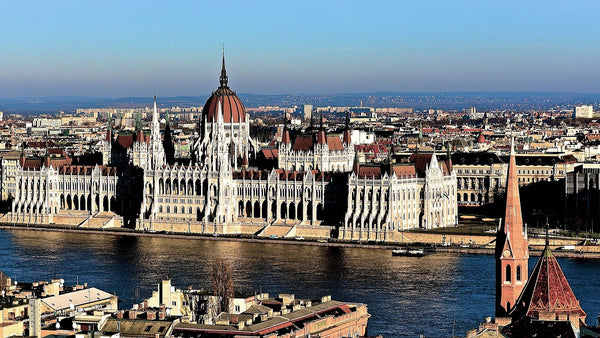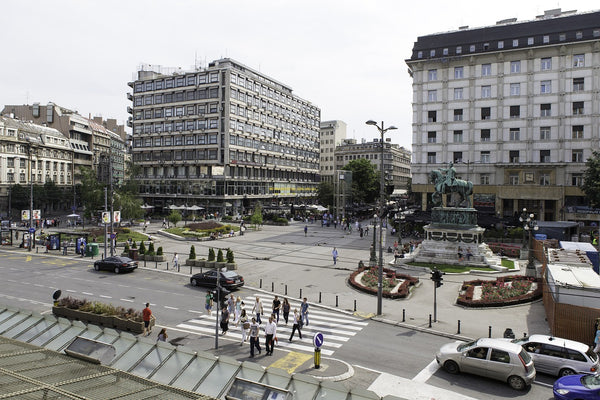Tour of 7 Eastern European cities! A treasure trove of history and culture to visit during your long stay

If you were to travel to Europe, which country would you like to go to? You probably think of Western Europe, such as France, the UK, and the Netherlands, but you may not be familiar with tourism in Eastern Europe. This time, we will feature Eastern Europe, which is attractive for its fusion of good old history and culture and beautiful nature, and introduce a spectacular travel route for a long-term stay in Eastern Europe over a month. Each country has its own unique history and culture, and each offers different scenery and experiences. Through this journey, you will be able to experience the deep charm of Eastern Europe, from medieval fortified cities to modern urban landscapes.
If you don't know what to bring on a long trip, check out the blog below!

1. Poland - Krakow
The start of your Eastern Europe trip is Krakow, Poland. Krakow is a historic city in Poland that was the capital until the 17th century and still retains a medieval atmosphere. This area, which is also registered as a UNESCO World Heritage Site, is bustling with outdoor cafes and musicians' performances. In particular, in front of the Mariacki Church, the sound of trumpets envelops the city at dusk, creating a romantic atmosphere. In addition, the nearby Wieliczka Salt Mine is a mysterious space that stretches deep underground, and you will be captivated by the art and sculptures made from rock salt. In this city, you can also enjoy traditional Polish cuisine and cafe culture, allowing you to experience the charm of Poland from many angles.
How to get there : There are direct flights from Japan, but it is also recommended to go to the current capital, Warsaw, and stay there for a few days before moving. It takes about 2-3 hours by domestic high-speed train from Warsaw.
Warsaw to Krakow - Google Maps

2. Hungary – Budapest
Budapest is the capital of Hungary and is divided into two areas, "Buda" and "Pest", by the Danube River. This beautiful city is dotted with many historical buildings and cultural heritage sites. The most famous of these is Buda Castle. This magnificent castle, which is also registered as a UNESCO World Heritage Site, is not only a beautiful building itself, but the view from the castle's observation deck is spectacular, offering a panoramic view of the Pest district across the Danube River. Budapest is also famous for its hot springs. There are many hot spring facilities in the city, and you can experience traditional Hungarian hot spring culture at places such as the "Szechenyi Baths".
How to get there : Take the Flixbus from Krakow, it takes about 7-8 hours. You need to buy tickets in advance for Flixbus . You can buy tickets online and just show the booking page.
Krakow to Budapest - Google Maps

3. Romania – Bucharest
Bucharest is the capital of Romania and the country's political, economic and cultural center. The city is also known as "Little Paris" and features architecture and urban planning influenced by the French Renaissance. The city's famous attractions include the Parliament Building, the second largest administrative building in the world, which attracts visitors with its splendor and size. There are also tours of the building's interior, which are well worth a visit. In the center of Bucharest, there are many historical buildings and cultural facilities, such as the "Old Royal Palace" and the "Athena Odeon". There are also many beautiful parks and gardens, and Herastrau Park in particular is a popular relaxation spot for citizens and tourists.
How to get there : Train or Flixbus from Budapest takes about 15 hours, but if you have the budget, flying is also an option, taking about 2 hours.
Budapest to Bucharest - Google Maps

4. Bulgaria – Sofia
Sofia is the capital of Bulgaria and a fascinating city where you can feel the fusion of history and culture that has continued since ancient times. Various civilizations, including Greece, Rome, and the Ottoman Empire, have ruled this land, so diverse cultural heritage still thrives. The Alexander Nevsky Cathedral in the center is a building that can be said to be the symbol of Sofia, and its huge dome and beautiful mosaic art attract visitors. Near this cathedral, the Roman ruins of Serdica spread out, and you can feel the ancient footprints. In addition, you can get traditional Bulgarian food and crafts in Sofia's markets and squares, so we recommend buying souvenirs in Bulgaria at Sofia's markets.
How to get there : By train from Bucharest, it takes about 9 hours, but you need to buy two tickets because you have to change trains once . You can also get there by Flixbus , which is a night bus.
Bucharest to Sofia - Google Maps

5. Serbia – Belgrade
Belgrade is the capital of Serbia and is located at the confluence of the Danube and Sava rivers. The city has been the site of many wars due to its strategic importance, and as a result has a diverse cultural heritage. The city's historical center, Kalemegdan Fortress, offers a panoramic view of the entire city and the flowing river, and at night you can enjoy a beautiful night view. There are many buildings in the city influenced by the Ottoman Empire and the Austrian Empire. Belgrade also has an area called the Bohemian Quarter, which is known as a place where many artists gather. This area is lined with modern cafes and bars while maintaining the atmosphere of the good old days, and is bustling with locals and tourists.
How to get there : Take Flixbus from Sofia (direct, about 6 hours).

6. Croatia – Zagreb
Zagreb is the capital of Croatia, and has its own unique charm as a city, even in a country known for the beauty of the Dalmatian coast and Plitvice Lake. The Zagreb Cathedral in the center is a beautiful Gothic-style building that attracts many tourists as a city landmark. In addition, in Zagreb's Old Town, you can feel the history of Zagreb in the areas where cobblestone alleys and medieval buildings remain. Zagreb is a city where historical charm and modern culture blend together, and it is a city that offers visitors an experience as one of Europe's beautiful capitals.
How to get there : Plane from Belgrade takes about 1 hour. Flixbus takes about 6-7 hours.
Belgrade to Zagreb - Google Maps

7. Slovenia – Ljubljana
Our final destination is Ljubljana. The capital of Slovenia, this city located at the crossroads of Central Europe and the Balkan Peninsula attracts many visitors with its unique charm. On both sides of the Ljubljanica River, which flows through the center of the city, old townscapes spread out, giving off a medieval atmosphere. In particular, the central bridge, known as the "Three Bridges," is a symbol of the city, and from this point you can stroll around the city's various attractions. Ljubljana Castle is located on a hill overlooking the city, and its history dates back to the 15th century. The view from the castle is spectacular, and you can see the whole of Ljubljana's cityscape. Ljubljana, where beautiful nature, ancient history, and modern vitality blend together, attracts many tourists with its calm atmosphere and urban beauty.
How to get there : Flixbus takes around 3 hours.
Zagreb to Ljubljana - Google Maps
summary
A one-month long-term stay will take you to seven attractive cities in Europe, from Krakow in Poland to Ljubljana in Slovenia, and you will be able to experience the local lifestyles, daily life, and history and culture of European countries in greater depth. We hope that the experience of traveling around each country, which can only be experienced during a long-term stay, will give you the opportunity to encounter different cultures and values, broaden your horizons, and gain new ways of thinking and feeling. If you are traveling around Europe on an extended stay, please consider having a VOYAGEE SIM for Europe for 30 days, as it will enable seamless communication and support your smart travel.











